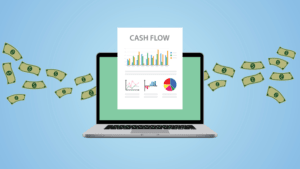Content

Accordingly, Congress decided that a new capital cost recovery system would have to, among other things, lessen the importance of the concept of useful life for depreciation purposes. Under ERTA, useful life remained a part of the depreciation system inasmuch as it established the recovery period in which an asset would be placed. depreciable property Assets were assigned a recovery period based on their asset depreciation range class life under pre-ERTA law, which was generally based on an asset’s useful life. Simon involved tax year 1989, but the items in question were placed in service during tax year 1985, so in this case the court was required to apply pre-1986 rules.
If a business has no operating income but the shareholder, partner or member has taxable income, it might be better for the business to use regular depreciation. Regular depreciation becomes part of the business operating loss that passes through to the shareholder, partner or member. Gains and losses arising from mass or extraordinary sales, retirements, or other disposition other than through business combinations shall be considered on a case-by-case basis. Common sense requires depreciation expense to be equal to total depreciation per year, without first dividing and then multiplying total depreciation per year by the same number. Year-end$70,000 1, ,00010,00060,0001, ,00021,00049,0001, ,00033,00037,0001, ,00046,00024,0001, ,00060,00010,000 Depreciation stops when book value is equal to the scrap value of the asset. In the end, the sum of accumulated depreciation and scrap value equals the original cost.
This change will allow businesses to deduct 100% of the cost of eligible property in the year it’s placed in service. For more information on changes to Section 168 and Section 179 refer to your tax preparer. Depreciable property includes machines, vehicles, office buildings, buildings you rent out for income , and other equipment, including computers and other technology. In the case of property that you’re renting, you’re considered as “owning” the improvements you’ve made on it and eligible to depreciate them, so long as these are enjoyed for longer than one year. Depreciable property can be eithertangiblelike the assets mentioned above, orintangible – patents, copyrights, computer software, and the like. There are numerous occasions that could justify an item being categorized as personal property as opposed to real property. There have been several court cases that have provided guidance for taxpayers establishing the differences between 1245 and 1250 property.
Free Financial Statements Cheat Sheet
That sounds complicated, but in practice it’s pretty simple, as you’ll see from the example below. An intangible asset can’t be touched—but it can still be bought or sold. Examples include a patent, copyright, or other intellectual property.

Most income tax systems allow a tax deduction for recovery of the cost of assets used in a business or for the production of income. Where the assets are consumed currently, the cost may be deducted currently as an expense or treated as part of cost of goods sold. The cost of assets not currently consumed generally must be deferred and recovered over time, such as through depreciation. Some systems permit the full deduction of the cost, at least in part, in the year the assets are acquired. Other systems allow depreciation expense over some life using some depreciation method or percentage. Rules vary highly by country, and may vary within a country based on the type of asset or type of taxpayer.
The partial disposition rule is usually elective; however, when a partial disposition results from a casualty, as part of a like-kind exchange, or in certain other circumstances, the partial disposition rule must be used. Our solutions for regulated financial departments and institutions help customers meet their obligations to external regulators. We specialize in unifying and optimizing processes to deliver a real-time and accurate https://www.bookstime.com/ view of your financial position. It is often not an either/or decision in terms of acquiring the right to use an asset. For example, farmers and ranchers generally need both land and equipment in order to produce outputs. The decision usually boils down to how to acquire access to the needed resources or, in the case of expansion, acquiring more of one of them in order to make more efficient use of the existing quantity of the other.
What Is Depreciation In Accounting?
The assessed value of the house is $75,000, and the value of the land is $25,000. Let’s say that, according to the manufacturer, the bouncy castle can be used a total of 100,000 hours before its useful life is over. To get the depreciation cost of each hour, we divide the book value over the units of production expected from the asset. In the case of intangible assets, the act of depreciation is called amortization. For information on what qualifies to be depreciated, or to determine the property’s placed in service date, see Publication 946.
- The humidifier may incidentally provide some level of comfort to the occupants of the building, but the purpose of its installation was primarily for the production of goods related to the taxpayers business.
- An asset is property you acquire to help produce income for your business.
- If the sale price were ever more than the original book value, then the gain above the original book value is recognized as a capital gain.
- With workflows optimized by technology and guided by deep domain expertise, we help organizations grow, manage, and protect their businesses and their client’s businesses.
- During the period you use the asset, you may have to adjust for additions or improvements, or casualty losses to the asset.
- A deduction for the full cost of depreciable tangible personal property is allowed up to $500,000 through 2013.
The principal issues are the recognition of assets, the determination of their carrying amounts, and the depreciation charges and impairment losses to be recognised in relation to them. Gains or losses of any nature arising from the sale or exchange of property other than the property covered in paragraph of this section, e.g., land, must be excluded in computing Federal award costs. Depreciation is a fixed cost using most of the depreciation methods, since the amount is set each year, regardless of whether the business’ activity levels change. Depreciation is the process of deducting the total cost of something expensive you bought for your business. But instead of doing it all in one tax year, you write off parts of it over time.
Recaptured Depreciation
Thus, depreciation expense is a variable cost when using the units of production method. If you acquire a number of assets at the same time , you need to allocate the purchase price among the various assets you purchased. The IRS provides special rules for doing this consult your tax advisor for more details. In an effort to stimulate the economy by encouraging businesses to buy new assets, Congress approved special depreciation and expensing rules for acquired property.

The plot of land on which the building rests, however, is not subject to depreciation because it is classified as a non-depreciable asset, or one that cannot lose value. This means that if an assessor values your total property at $300,000 and the land on which it sits is valued at $25,000, the property’s depreciable value starts at $275,000. The property can be devalued at a steady rate for a prescribed period of time, which, as of 2011, is 27½ years for residences and 39 years for commercial properties. In the same example, the property will depreciate at $10,000 per year until it has no value 27½ years later.
Depreciation Of Investment Property
If you own property with both business and personal uses, like a car, you can only depreciate it in proportion to how often it is used for business purposes. This factor can also affect what you might pay in capital gains tax if you sell the asset for a profit. You must add back in the depreciation you claimed to your adjusted basis in the asset for calculating your profit for tax purposes.
The difference between the two figures is a long-term capital gain . Capital gains are subject to federal income taxes at varying rates, usually lower than ordinary income tax rates, but they are not taxed as self-employment income. In some cases the buyer also can claim expense method depreciation . With this option, the IRS allows up to a maximum amount, currently $500,000, of the eligible cost of an asset to be deducted in the year of purchase. The remaining basis of the asset then is depreciated by one of the other methods.
- The gain recognized for contract costing purposes shall be limited to the difference between the acquisition cost of the asset and its undepreciated balance (except see paragraphs or of this subsection).
- However, this option is not available for acquisitions from closely-related parties, which can affect many family transactions.
- With this option, the IRS allows up to a maximum amount, currently $500,000, of the eligible cost of an asset to be deducted in the year of purchase.
- You’ll then divide this figure over the number of years of its class life.
- For eligible property placed in service in 2018, the special bonus depreciation rate is reduced to 40 percent of the cost of qualifying new business property.
- However, when the underlying property is sold, any undepreciated value of the additions or improvements must be added to the asset’s tax basis to compute your taxable gains.
Many systems that specify depreciation lives and methods for financial reporting require the same lives and methods be used for tax purposes. Most tax systems provide different rules for real property (buildings, etc.) and personal property (equipment, etc.). One common method is the five-year Modified Accelerated Cost Recovery System 200 percent declining balance option, which is allowed for new machinery. Example 1 shows how an item of machinery with an initial tax basis of $60,000 is depreciated over six income tax years.
Join Pro Or Pro Plus And Get Lifetime Access To Our Premium Materials
For a two-generation situation in which the parents have not completely retired, non-participation may be difficult to show, however. Rent paid for the use of farm assets under a genuine lease also is an ordinary expense to the renter and taxable income to the owner. Rent paid under a lease that closely resembles a purchase agreement is not deductible. Instead, the renter is considered to be the purchaser and may continue to claim a deduction for depreciation as well as for interest, repairs, taxes, and insurance. However, the tax basis of the new equipment will be equivalent to the adjusted basis of the old equipment, plus any additional cash you paid for the new equipment.

Suppose the truck sells for $7,000 when its net book value is $10,000, resulting in a loss of $3,000. The sale is recorded by debiting accumulated depreciation‐vehicles for $80,000, debiting cash for $7,000, debiting loss on sale of vehicles for $3,000, and crediting vehicles for $90,000.
However, a $140,000 cash purchase of a depreciable tractor and $140,000 down payment on a $750,000 land purchase can be analyzed quite clearly. Care should be taken to make sure the comparison is fair and the decision is not biased toward the purchase of the lower priced asset. It may look like a smaller commitment with lower risk but it is also a commitment to depreciation expense that introduces risk to the operation. For instance, if the owner of a property purchased for $250,000 took $200,000 in deductions by the time it was sold for $225,000, the owner would have to pay taxes on a $175,000 profit even though he took a loss on his investment. The IRS does not offer a “free lunch”; depreciation merely allows an investment property owner to pay for his meal long after he’s eaten it.
Remember, the bouncy castle costs $10,000 and has a salvage value of $500, so its book value is $9,500. Play around with this SYD calculator to get a better sense of how it works. Even if you defer all things depreciation to your accountant, brush up on the basics and make sure you’re leveraging depreciation to the max. Don’t get lost in the fog of legislative changes, developing tax issues, and newly evolving tax planning strategies. Tax Section membership will help you stay up to date and make your practice more efficient.
Different limits apply for depreciable real property, such as buildings. Methods of computing depreciation, and the periods over which assets are depreciated, may vary between asset types within the same business and may vary for tax purposes.
The rules are somewhat complex, so it can pay to understand them before you purchase a capital asset with the expectation that you can depreciate it. Entities with property, plant and equipment stated at revalued amounts are also required to make disclosures under IFRS 13 Fair Value Measurement. The depreciable amount should be allocated on a systematic basis over the asset’s useful life [IAS 16.50]. This post is to be used for informational purposes only and does not constitute legal, business, or tax advice. Each person should consult his or her own attorney, business advisor, or tax advisor with respect to matters referenced in this post. Bench assumes no liability for actions taken in reliance upon the information contained herein.
The composite method is applied to a collection of assets that are not similar, and have different service lives. For example, computers and printers are not similar, but both are part of the office equipment. Depreciation on all assets is determined by using the straight-line-depreciation method. Mid-year convention – Generally the mid-year convention applies to all classes of property except real estate.
Even if the home’s assessed value has tripled during that time period, it is considered worthless to the IRS. The property is given in exchange as part of the purchase price of a similar item and the gain or loss is taken into account in determining the depreciation cost basis of the new item. The number of years over which you depreciate something is determined by its useful life (e.g., a laptop is useful for about five years). For tax depreciation, different assets are sorted into different classes, and each class has its own useful life. If your business uses a different method of depreciation for your financial statements, you can decide on the asset’s useful life based on how long you expect to use the asset in your business. At this point, it would be beneficial for the IRS to address this issue again in light of statutory changes and court decisions.

Add Your Comment